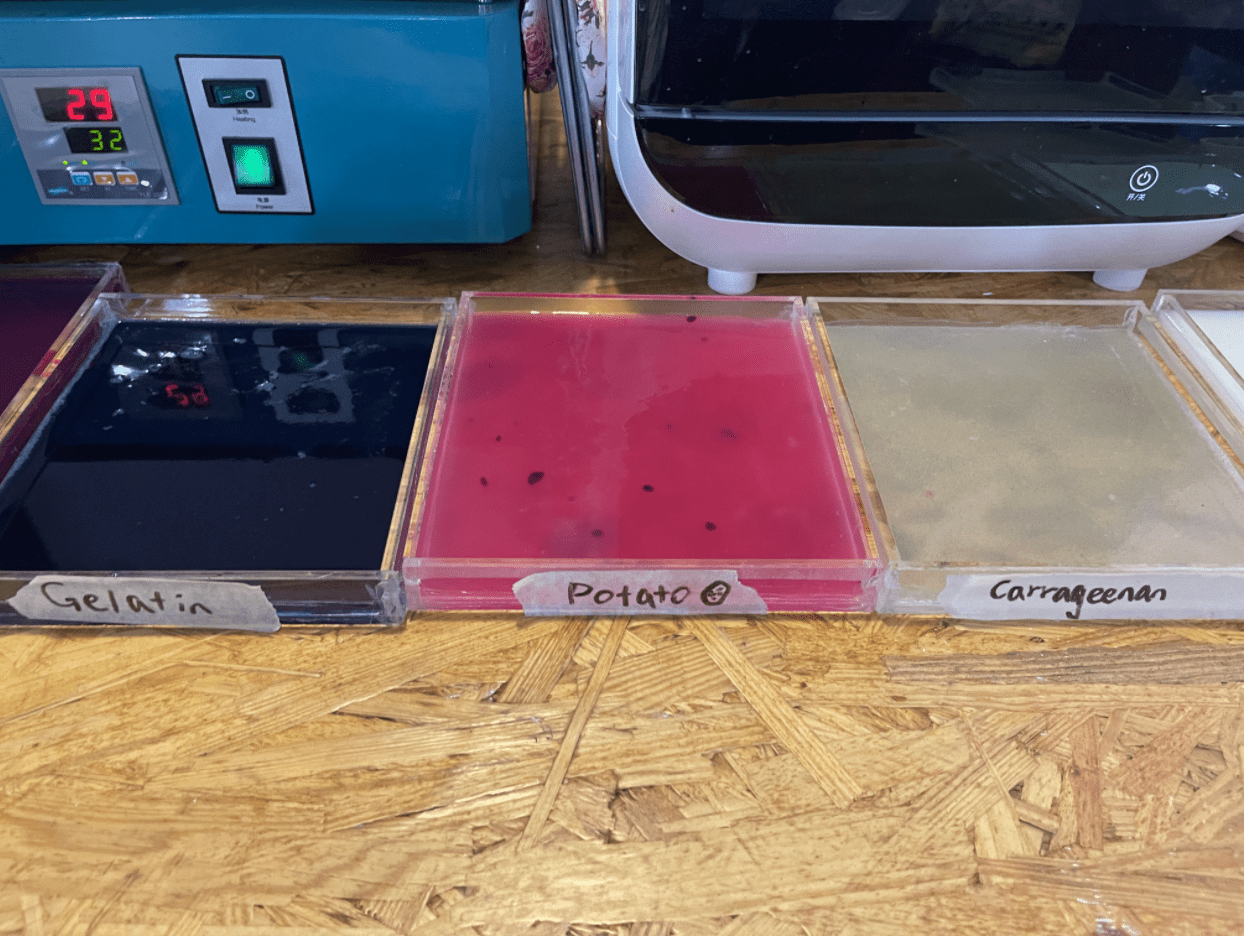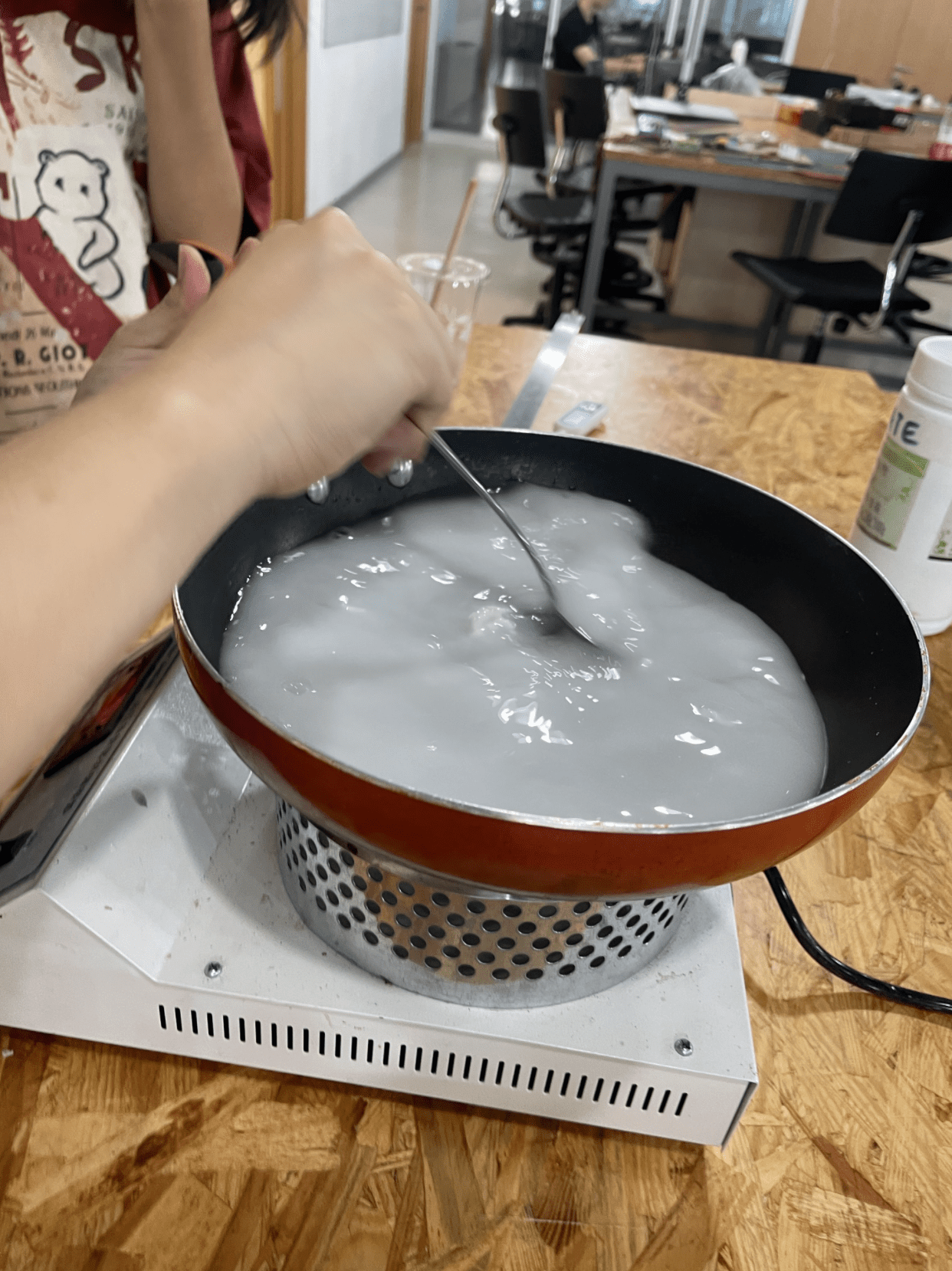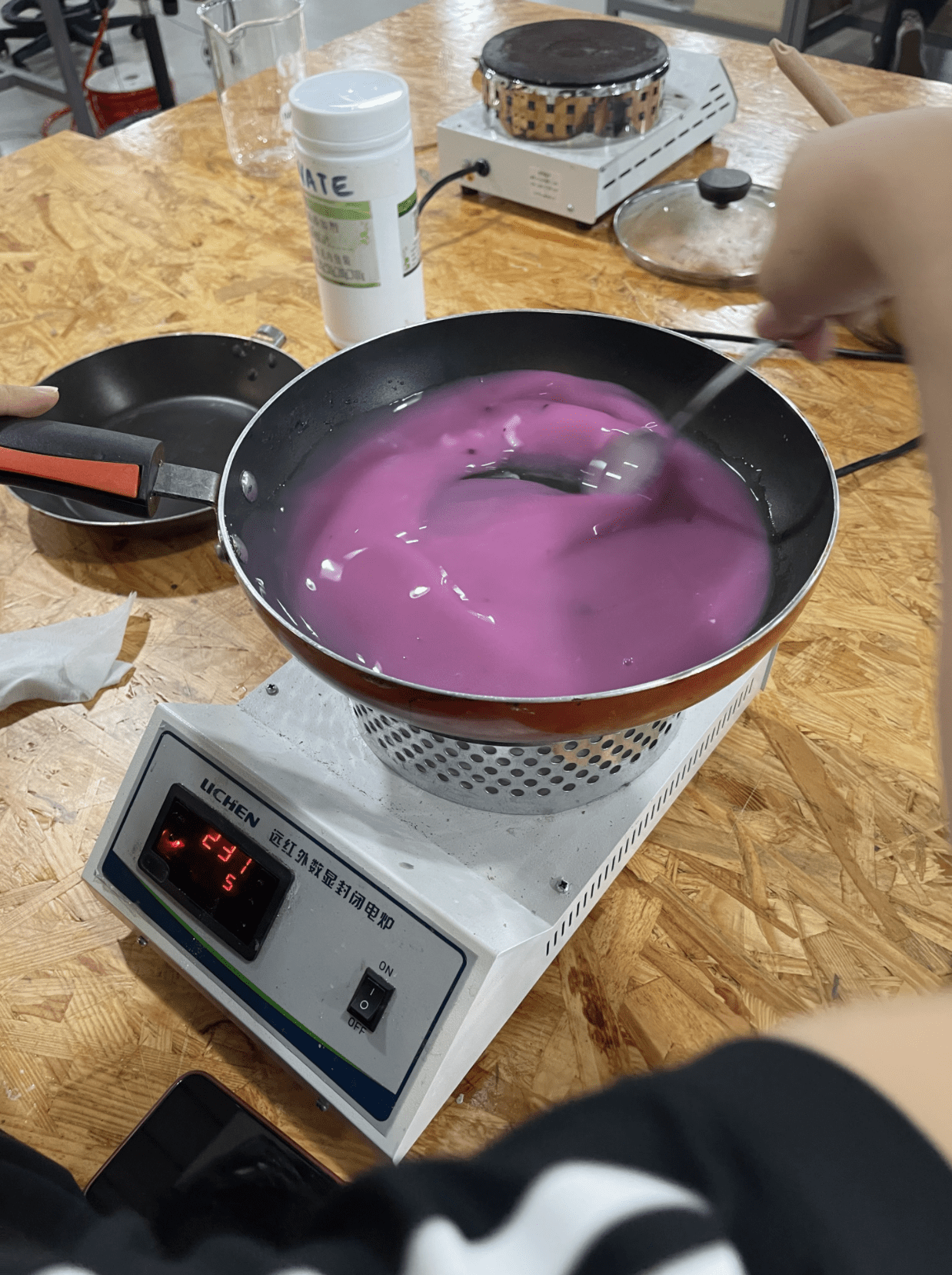Short Answer
For the short answer to a reading, I’d like to respond to Bio-based plastics reading. So for this reading, it introduced a lot of how materials in common day can be used and applied for creating new products. These include starch. I wanted to focus on what I found most impressive in terms of the reading which would be bacterial fermentation as a method for creating plastics. Normally, when I think of bacteria, I think of them as something that sort of decomposes the environment or is a sign of decomposition in many cases e.g. mold and fungi. When it is used for this purpose of creating renewable plastic, I feel that it changed my perspective on what materials are plastic which is valuable for me to understand this aspect.
Lab Report: Bioplastics
Introduction: Bioplastics, on the whole, contain fewer components derived from fossil fuels and are normally more compostable due to being created from sustainable sources. It is a positive move to replace fossil fuels with renewable resources that can be found in our environment. Bioplastics emit fewer greenhouse gases than petroleum-based polymers under the right conditions. Instead of using fossil fuels, bioplastics are created from sustainable resources. Corn, potatoes, rice, soy, sugar cane, wheat, and vegetable oil are all examples of renewable carbon supplies. By completing this lab, we learned that bioplastics are available and are more beneficial to our environment. We will also include the pros and cons of each plastic we created as an analysis of the applicability for our situation.
Members: Angel Chang, Max Sun, Snow Chen, and Ken Wu
NetID: amc9985, sc8485, ks5378, kw2820
Lab Report 1
Created Material: Potato Starch Bioplastic
Introduction or Purpose: To experiment making bioplastics using potato starch, a grown source of food in which potatoes can be utilized for creating sustainable products.
Ingredients and Amounts: 320 ml Water, 30ml Vinegar, 12 get Glycerol, 20gr potato starch, container mold area: 20cm by 8.5 cm
Tools: Mold(An Acrylic Box), Scale, Pot, Stove, Spoon, Measuring Glass, and Syringe
Methods:
Mix water, starch and glycerol together in a pot.
Turn on the heat to high and start stirring the mix.
When it starts bubbling up, continue stirring the mix for 2 more minutes.
After this, remove the pot from the stove, add the vinegar, and mix well.
Finally pour the mix into the mold.
We also added sweet potato powder to give it some color.
Curing time and temperature:
3-4 minutes-ish at 85 degree celsius.
Results: (photography)

This is the end result of the bioplastic. The texture is soft and kind of rubbery.
For creating the plastic, we had to heat up the solution of potato starch, glycerol, and water through a stove, stirring it.

Towards the end, we added sweet potato starch to add color to our plastic.
Physical aspect:
The bioplastic appears to be a pink purple square-look solid, with a few bubbles in it.
Material observations according to external factors or changes over the time:
When the mixture is in the pot, as we continue heating it the solid starts to melt, and eventually we get a mixture that looks like glue, but contains floccule and air bubbles.
When it gets cool, some of the air bubbles disappear. In addition, the overall texture (hardness/softness) is that it’s more soft.
Conclusions:
The process went really well, something we could have improved is to control the amount of water. The amount of water we added was more than we needed. Since we don’t have a large mold, when we pour the mixture into the mold it is too thick, and it takes longer to set.
Pros and Cons:
Pros – This type of material is easy to create as it’s sustainable. In addition, it can easily be molded into shapes for more flexible material.
Cons – This type of material isn’t exactly stable. From personal observation, it starts to open up and crack after a period of time, hence if this is utilized as a material of a project, it would need to just be a temporary material rather than a permanent material.
Lab Report 2
Created Material: Gelatin Bioplastic
Introduction or Purpose: To experiment making bioplastics using gelatin
Ingredients and Amounts: 60 ml Water, 3.6 g Glycerol, 12 gGelatin, 10ml vinegar, Blue Pigment
Tools: Mold(An Acrylic Box), Scale, Pot, Stove, Spoon, Measuring Glass, and Syringe
Methods:
Add water, gelatin and glycerol into a pot.
Cook over medium heat and stir until the gelatin dissolves and the solution starts to thicken.
Remove the pot from the stove and remove the froth with a spoon if there is any.
Pour the mix into the mold.
Curing time and temperature:
3-4 minutes-ish. 85 degree celsius.
Results: (photography)

The left one is gelatin.
As for the steps, it is the same as potato starch so no extra photos will be shown and commented on.
Physical aspect:
A blueish square-look solid, with a few bubbles in it.
Material observations according to external factors or changes over the time:
When the mixture is in the pot, as we continue heating it the solid starts to melt, and eventually we get a mixture that looks like glue, but contains floccule and air bubbles.
When it gets cool, some of the air bubbles disappear and we slightly cause it to disperse by hitting it.
Conclusions:
The process went well, something we could have improved is to control the amount of pigment. The amount of pigment we added was more than we needed. Maybe also cut down the amount of ingredients, since we don’t have a large mold, when we pour the mixture into the mold it is too thick, and it takes longer to set.
Pros and Cons:
Pros – This material is extremely dense and hard. It makes for a sturdy material.
Cons – If water is added to it, it might become decomposed. In addition, it’s hard to cut the material to the needs.
Lab Report 3
Created Material: Carrageenan bioplastic
Ingredients and Amounts: 350ml of water, 16g of carrageenan, 3ml of glycerin, and algae powder
Tools: Mold(An Acrylic Box), Scale, Pot, Stove, Spoon, Measuring Glass, and Syringe
Methods:
Add water and carrageenan in to the pot.
Cook over medium heat and stir until it dissolves, then add glycerin, repeat the progress.
Add algae powder at last, repeat the heating and stirring progress once again.
Pour the mix into the mold.
Curing time and temperature:
about 3-4 minutes. 85 degree celsius.
Results:
 Carrageenan is the material on the right.
Carrageenan is the material on the right.
Physical aspect:
A light green solid square with a few bubbles in it.
Material observations according to external factors or changes over the time:
When the mixture is in the pot, as we continue heating it the solid starts to melt, and eventually we get a mixture that looks like glue, but contains floccule and air bubbles.
When it gets cool, some of the air bubbles disappear. At the end, it becomes more of a cloth-like texture.
Conclusions:
There wasn’t any issues during the process, we were first worried that water might evaporate due to the temperature, so added a little more than the amount that we needed, but soon we figured that it wasn’t any problem. Maybe next time we could swirl faster so the color could mix in more evenly and faster as well.
Pros and Cons:
Pros – The material is mendable which can be applied for a lot of prototypes that have organic shapes. In addition, the thickness is decent allowing the material to be stronger than something like potato starch.
Cons – The material is also very organic. It’s difficult to define the borders and how the material is shaped as the material will combine together in new ways.
Leave a Reply